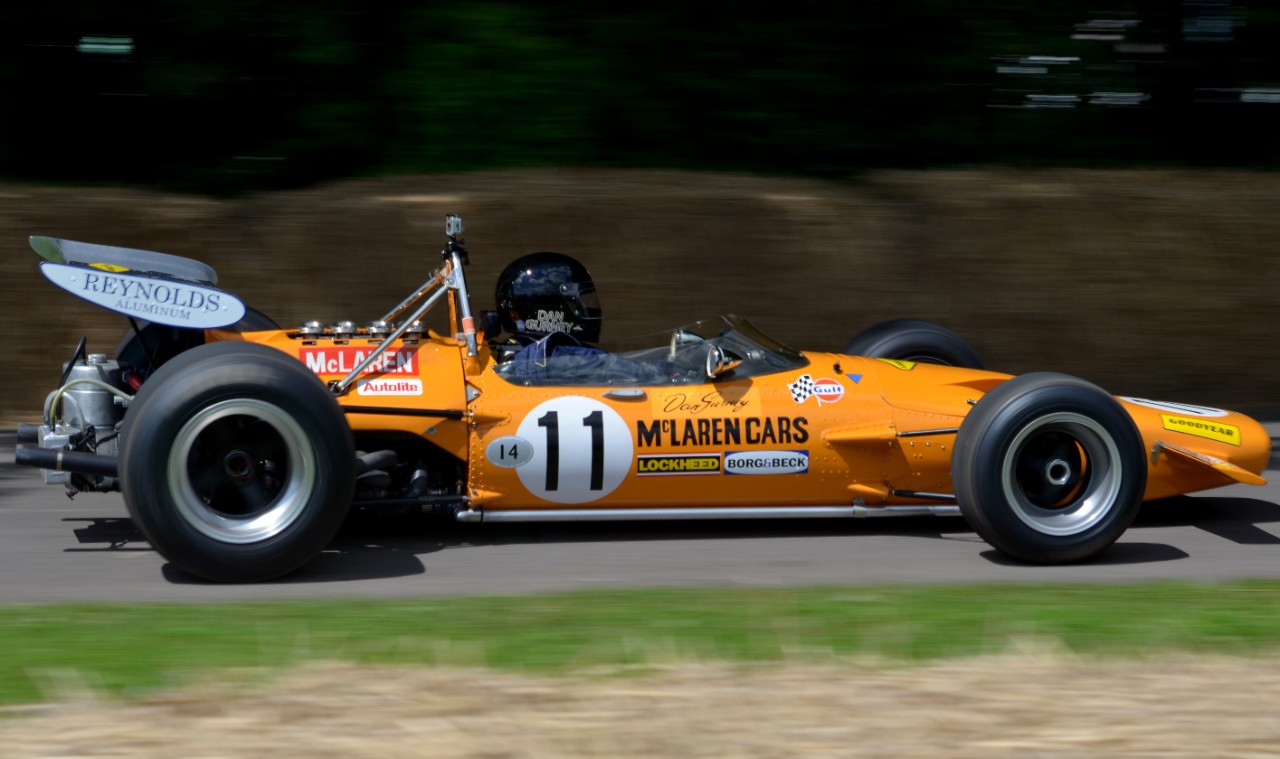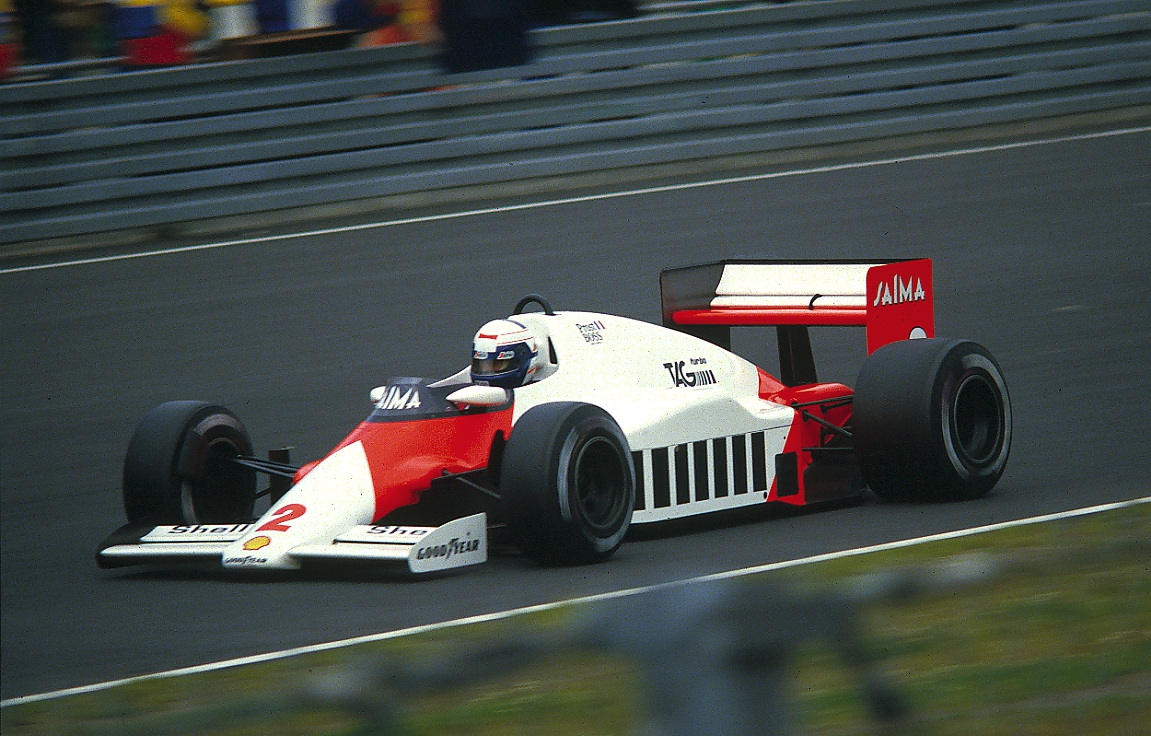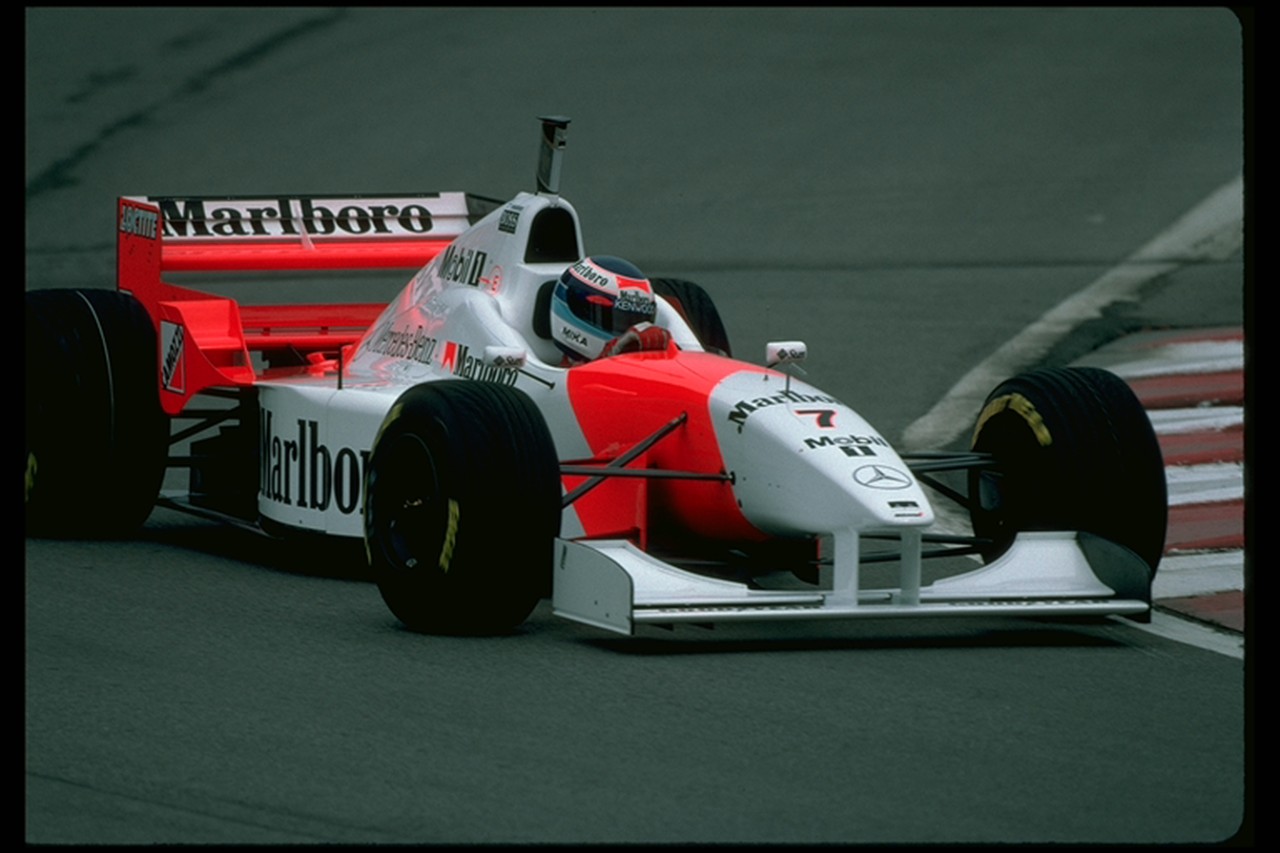Three tyre manufacturers vied for honours in the period that followed, making tyre development as key to success as engine and chassis technology. F1 engineers discovered a magic formula called downforce. Aerospace innovations thrust F1 pace forward, including the upturned wings that forced a car’s tyres into the ground, massively improving cornering grip. The forces were unlike anything a car tyre manufacturer had experienced before, but we moved up a gear to respond. Slicks replaced treaded tyres and the contact patch now matched the downforce levels.
In 1971 and 1973, Jackie Stewart and Tyrrell worked closely with us to dominate in this fearsome era. Stewart retired at the end of 1973 but continue to collaborate with us to develop road tyres for many years after.












